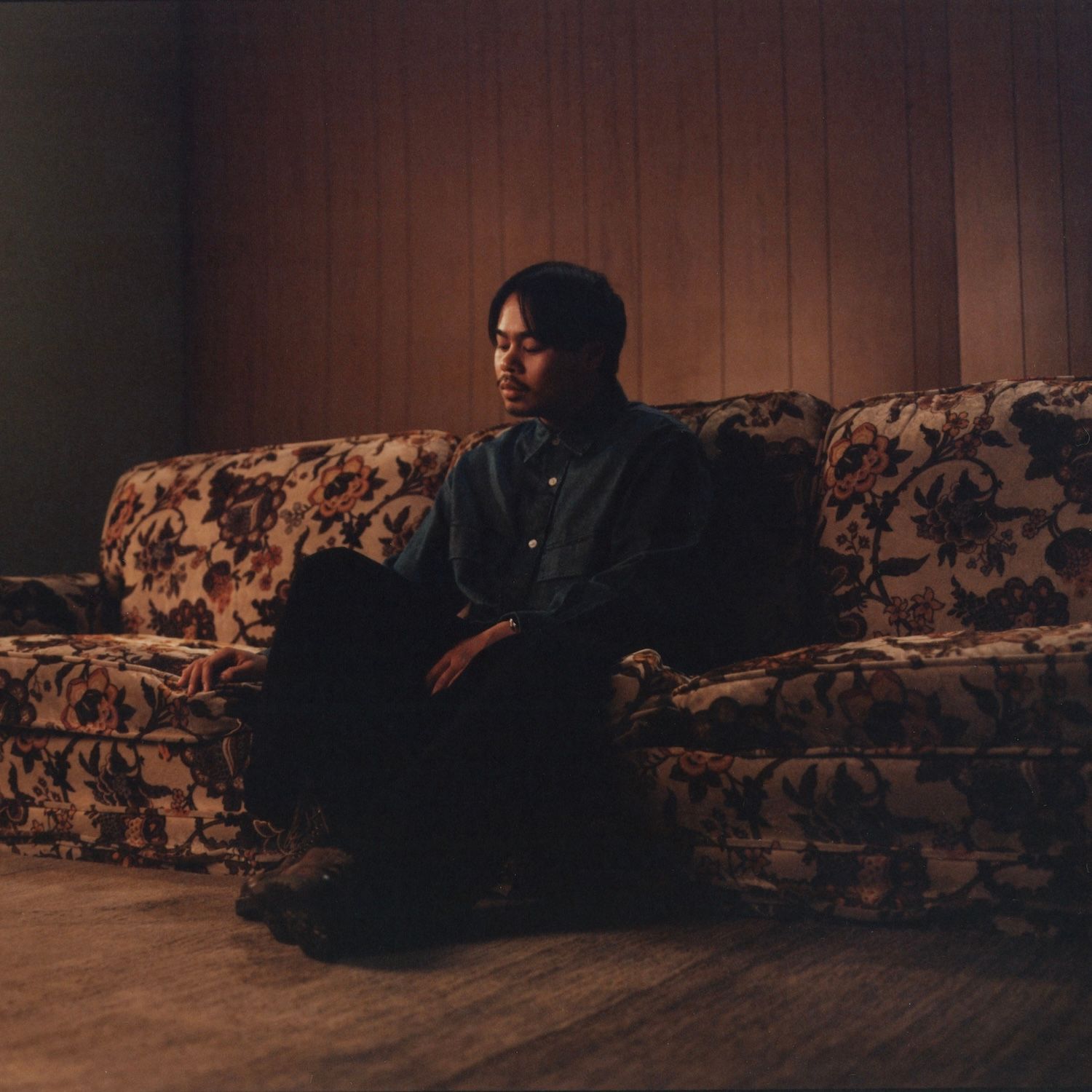Luxury watches represent more than mere timekeeping instruments—they’re investments, heirlooms, and status symbols that can appreciate significantly over time. Whether you’ve inherited a timepiece, purchased one secondhand, or simply want to verify your own watch’s provenance, understanding how to authenticate and verify luxury watches is essential knowledge for any serious collector or owner.
The secondary market for premium watches has exploded in recent years, with certain models commanding prices far exceeding their original retail values. Unfortunately, this surge in popularity has also attracted sophisticated counterfeiters who produce increasingly convincing replicas. Beyond outright fakes, the market also contains franken-watches (assembled from mismatched parts), refinished pieces, and watches with replaced components that significantly diminish value. Knowing how to verify authenticity, determine age, and assess originality protects your investment and ensures you’re getting exactly what you pay for.
Why Watch Authentication Matters
The financial stakes in luxury watch transactions can be enormous, with some pieces trading for tens or even hundreds of thousands of pounds. A seemingly minor detail—whether a dial is original or refinished, whether parts are correct for the production year, or whether documentation is genuine—can mean differences of thousands in value.
Protecting Your Investment
Purchasing a counterfeit or misrepresented watch doesn’t just mean overpaying—it often means acquiring something essentially worthless. Most luxury watch brands refuse to service non-genuine pieces, leaving you with a watch that will eventually cease functioning without any legitimate repair options.
Even subtle authenticity issues impact value dramatically. A watch with a replaced dial might lose 30-50% of its value compared to an all-original example. Refinished cases, replacement hands, or non-original bracelets all diminish collector appeal and marketability.
Legal and Ethical Considerations
Knowingly selling counterfeit goods is illegal in most jurisdictions, potentially exposing sellers to civil and criminal liability. Even unknowing sellers can face legal complications if buyers discover they’ve purchased fake merchandise.
From an ethical standpoint, the counterfeit watch trade funds organized crime and undermines legitimate businesses. Purchasing counterfeits, even “just for fun,” supports criminal enterprises and hurts the industry you presumably appreciate enough to want to emulate.
Insurance and Documentation
Accurate authentication and documentation prove essential for insurance purposes. Insurers require verification of authenticity and value before covering expensive watches. Without proper authentication, you may struggle to insure your watch adequately or face claim denials if something happens to it.
Key Elements of Watch Authentication
Authenticating luxury watches involves examining multiple features, each providing clues about genuineness and originality.
Serial and Reference Numbers
Most luxury watch manufacturers stamp unique serial numbers on their timepieces, typically located on the case between the lugs (the protruding pieces where the bracelet or strap attaches). These serial numbers serve multiple purposes—they indicate production year, verify authenticity, and help track a watch’s history.
Reference numbers identify the specific model and its features—case size, material, movement type, and dial configuration. Cross-referencing serial and reference numbers against manufacturer databases confirms whether they match the watch’s purported specifications.
For those specifically interested in understanding Rolex serial numbers, these alphanumeric codes follow specific patterns that changed over the decades, providing valuable dating information and authenticity verification. Different manufacturers use varying serial number systems, so familiarity with specific brand conventions is essential for accurate authentication.
Movement Examination
The movement (the mechanism that powers the watch) often provides the most definitive authentication evidence. Genuine luxury watch movements exhibit exceptional finishing, precise construction, and distinctive features that counterfeiters struggle to replicate convincingly.
Opening the case back reveals the movement, where experts look for manufacturer-specific finishing techniques, correct jewel count, proper stamping, and authentic movement numbers. High-quality movements display meticulous decoration—perlage (circular graining), Côtes de Genève (Geneva stripes), and polished bevels—executed to standards counterfeiters rarely achieve.
However, examining movements requires expertise and proper tools. Casually opening watches risks damage, and average observers may struggle to distinguish quality reproductions from authentic movements. This examination is best left to qualified watchmakers or authentication services.
Dial Authenticity and Condition
Dials—the watch face displaying time—offer numerous authentication points. Genuine luxury watch dials exhibit perfect printing alignment, consistent font styling, correct logo placement, and appropriate aging for the watch’s age. Printing should be crisp under magnification, without fuzzy edges, uneven ink density, or color variations.
Lume (luminous material on hands and markers) should be consistent and appropriate for the production period. Vintage watches may have aged lume with consistent patina across all luminous elements, while replacements often show mismatched coloring.
Unfortunately, dial authenticity also represents one of the most challenging authentication aspects. Professional dial refinishing has become so sophisticated that even experts sometimes disagree about originality. Additionally, manufacturers themselves occasionally replaced dials during service, creating genuine watches with period-incorrect components.
Case and Bracelet Details
Cases and bracelets contain numerous authentication points including proper hallmarks, correct stampings, appropriate finishing, and period-accurate construction methods. Weight often provides quick authenticity clues—genuine luxury watches use substantial precious metals while counterfeits may use lightweight alternatives.
Bracelet links, clasps, and end links should display proper stamping, smooth operation, and quality finishing. Counterfeit bracelets often feel flimsy, show rough finishing, or lack correct stampings. Even high-quality replicas typically fall short in these mechanical details requiring precision manufacturing that’s economically unfeasible for counterfeiters.
Crystal and Cyclops Examination
Crystals (the transparent cover over the dial) in genuine luxury watches are typically sapphire—extremely scratch-resistant and optically clear. Many models include cyclops magnifiers over date windows, which should magnify precisely and distort-free.
Counterfeit crystals may be mineral glass or plastic, showing scratches genuine sapphire wouldn’t develop. Cyclops magnification on fakes often appears weak, off-center, or produces distortion around edges. Additionally, genuine watches may display anti-reflective coating producing characteristic purple or blue tint when viewed at angles.
The Role of Documentation and Provenance
Original documentation significantly enhances watch value and simplifies authentication, though its absence doesn’t necessarily indicate problems.
Original Papers and Warranty Cards
Luxury watches typically include warranty cards stamped with serial numbers, purchase dates, and authorized dealer information. These cards prove crucial for establishing authenticity, confirming age, and documenting ownership history.
However, papers can be forged, separated from watches, or paired with incorrect watches. Verify that serial numbers on papers match those on the watch precisely. Check that the model described on paperwork corresponds to the actual watch in every detail.
Service History and Receipts
Documentation of service history from authorized service centers provides valuable provenance. Service papers typically note serial numbers and describe work performed, creating an ownership trail that’s difficult to falsify comprehensively.
Regular authorized service also suggests the watch is genuine—manufacturers won’t service counterfeits, and detailed service records spanning years are impractical to forge convincingly.
Original Packaging and Accessories
Complete sets including original boxes, manuals, tool kits, and hang tags command premium prices over watch-only sales. Original packaging includes specific details—correct period styling, proper materials, appropriate inclusions—that authenticate the complete package.
However, empty packaging can be purchased separately and paired with watches fraudulently. Packaging authenticates the watch only when serial numbers, model details, and condition align logically with the timepiece itself.
Common Counterfeiting Techniques and Red Flags
Understanding how counterfeiters operate helps identify suspicious watches before you’re financially committed.
Quality Tiers of Counterfeits
Counterfeits range from obvious low-quality replicas identifiable at a glance to sophisticated “super clones” requiring expert examination. Low-end fakes use quartz movements instead of mechanical, display poor finishing, and show obvious visual discrepancies. Mid-tier replicas incorporate automatic movements and better construction but reveal their nature under scrutiny. High-end counterfeits use quality movements, accurate details, and can fool casual observers or even experienced collectors without thorough examination.
The existence of high-quality fakes means that no single detail definitively authenticates watches. Comprehensive examination of multiple elements provides confidence, while passing a casual visual inspection proves nothing.
Franken-watches and Misrepresented Restorations
Beyond pure counterfeits, the market contains “franken-watches”—genuine cases housing incorrect movements, mismatched dials, replacement hands, or parts from different models. These pieces may pass superficial authentication but fail detailed verification revealing their mongrel nature.
Similarly, some sellers misrepresent heavily restored watches as original. While restoration isn’t inherently problematic—watches need maintenance and may require part replacement—transparency is essential. Undisclosed refinishing, replacement dials, or swapped components constitute misrepresentation that dramatically affects value.
Suspicious Pricing and Sales Circumstances
If a deal seems too good to be true, it probably is. Luxury watches in high demand rarely sell significantly below market value except under unusual circumstances like estate sales or owners needing immediate liquidity. Dramatic discounts should trigger heightened scrutiny rather than celebration over finding a bargain.
Similarly, sellers unwilling to provide clear photos, refusing to meet in person, or unable to answer basic questions about the watch’s history warrant suspicion. Legitimate sellers of valuable watches typically welcome authentication and provide transparent information facilitating buyer confidence.
Professional Authentication Services
While personal knowledge helps identify obvious problems, professional authentication services provide expert opinions worth their modest cost relative to watch values.
When to Seek Professional Authentication
Consider professional authentication for any luxury watch purchase exceeding a few thousand pounds, particularly in private party transactions. The several hundred pounds an authentication service costs represents tiny insurance against purchasing a counterfeit worth only its scrap metal value or an altered watch worth half what you’d pay.
Authentication proves particularly crucial for vintage watches where originality questions are complex, documentation may be absent, and even experts sometimes disagree about specific details. Professional authenticators bring years of experience, reference libraries, and technical equipment that individual buyers can’t replicate.
What Authentication Services Provide
Comprehensive authentication services examine every aspect of a watch—movement, case, dial, hands, crystal, bracelet, and documentation. They compare findings against reference materials documenting correct specifications for that model and production period.
Services typically provide detailed reports documenting their findings, opinions about authenticity, and specific concerns or red flags. These reports support insurance applications, provide recourse if problems emerge, and enhance resale value by offering potential buyers independent verification.
Choosing Reputable Authentication Services
Select authentication services with established reputations, preferably specializing in the brand you’re verifying. Look for services employed by auction houses, recognized by major dealers, or recommended by collector communities.
Beware of “authentication” services that seem universally positive or that pressure you toward specific sellers. Legitimate authenticators maintain objectivity and frequently identify problems—their value lies in protecting you from bad purchases, not rubber-stamping anything presented.
Brand-Specific Verification Resources
Major luxury watch brands offer varying levels of support for authentication and verification.
Manufacturer Archives and Certificates
Some manufacturers maintain comprehensive archives and offer certificate services confirming production details for watches based on serial numbers. These certificates, usually available for a fee, provide official documentation of authenticity and original specifications.
However, these services vary by brand. Some manufacturers readily provide detailed certificates, others offer limited information, and some refuse to authenticate watches outside their service centers. Research what verification services your specific brand offers before purchasing questionable watches.
Authorized Service Centers
Authorized service centers for luxury brands can often verify authenticity, though they typically charge for this service and may require leaving the watch for examination. They offer the advantage of manufacturer-level expertise and access to internal reference materials not publicly available.
Some brands, however, refuse to authenticate watches without performing full services, making verification expensive. Additionally, service centers may refuse to return watches they determine are counterfeit, leaving you without watch or refund if you’ve already paid a seller.
Protecting Yourself as a Buyer
Smart purchasing practices minimize authentication risks regardless of where you buy.
Dealing with Authorized Dealers
Purchasing from authorized dealers offers maximum security. Authorized dealers stake their business relationships on selling only genuine products and typically stand behind authenticity completely. While prices may be higher—particularly for new watches—the peace of mind justifies the premium for many buyers.
Reputable Pre-Owned Dealers
Established pre-owned luxury watch dealers offer middle ground between authorized dealer prices and private party deals. Reputable dealers authenticate watches, provide warranties or guarantees, and maintain business reputations they won’t risk on counterfeits.
Research dealers before purchasing—look for established businesses with physical locations, positive reviews from verified customers, and policies offering authentication guarantees with return rights if problems surface.
Private Party Transactions
Private party purchases offer the best potential value but highest risk. Implement multiple safeguards: meet in person if possible, examine the watch thoroughly, request professional authentication before finalizing payment, and use secure payment methods offering buyer protection.
Never wire money or use untraceable payment for expensive watches from unknown sellers. Legitimate sellers accept payment methods offering dispute resolution, understanding that reputable transactions protect both parties.
Auction House Purchases
Major auction houses authenticate watches before sale and typically guarantee authenticity for a period after purchase. However, read terms carefully—guarantees may be limited, and returns may be restricted to specific circumstances within short timeframes.
Smaller or online-only auction platforms offer varying authentication rigor. Some provide expert authentication, others offer items “as-is” without verification. Understand exactly what guarantees apply before bidding on expensive lots.
Red Flags and Warning Signs
Certain warning signs should trigger additional scrutiny or cause you to walk away from potential purchases entirely.
Inconsistent or Missing Information
Sellers unable or unwilling to provide basic information—serial numbers, purchase history, reason for selling—warrant suspicion. Legitimate owners typically know their watches’ histories and happily share details with serious buyers.
Reluctance to provide detailed photographs, particularly of serial numbers, movement, or specific details you request, suggests possible problems. Genuine watch sellers understand buyer caution and accommodate reasonable documentation requests.
Pressure Tactics and Urgency
High-pressure sales tactics—claims that other buyers are interested, time-limited pricing, or insistence on immediate payment—are red flags. Legitimate sellers of valuable watches allow time for verification and understand that thoughtful buyers don’t make impulsive five-figure decisions.
Unwillingness to Meet or Allow Authentication
Sellers refusing to meet locally (for proximity-appropriate transactions) or who won’t allow professional authentication before payment completion raise significant concerns. While some sellers may decline opening watches for movement examination before purchase, refusing all forms of verification suggests possible problems.
Maintaining Your Watch’s Value and Authenticity
Once you’ve acquired an authenticated luxury watch, protecting its value requires careful ownership practices.
Service with Authorized Centers
Always service luxury watches through authorized service centers. While unauthorized watchmakers may charge less, their work risks affecting authenticity verification and can diminish value if they use non-original parts or improper techniques.
Authorized service centers document their work, use genuine parts, and perform services to manufacturer specifications. This documentation enhances resale value and ensures that your watch maintains factory standards throughout its life.
Preserving Original Components
If service requires replacing components, request the old parts back. Some collectors prize watches with original parts even when aged or worn, particularly for vintage pieces. Having both original and replacement parts maximizes flexibility for future restoration or resale.
Maintaining Complete Documentation
Keep all documentation together—original papers, service records, receipts, authentication certificates, and even purchase communications. Comprehensive provenance significantly enhances value and simplifies authentication for future buyers if you eventually sell.
Store documents separately from the watch itself. If the watch is stolen or lost, at least you’ll retain documentation for insurance claims and possible recovery identification.
Frequently Asked Questions
Can I authenticate my watch myself without professional help?
While you can learn to identify obvious counterfeits through research and careful examination, definitively authenticating luxury watches—particularly expensive or vintage pieces—typically requires professional expertise. Counterfeiters constantly improve their techniques, and subtle details distinguishing genuine pieces from high-quality fakes require specialized knowledge and equipment. For watches worth more than a few thousand pounds, professional authentication provides valuable peace of mind worth its modest cost. However, educating yourself helps identify obvious problems and makes you a more informed buyer even when ultimately seeking expert verification.
How much does professional watch authentication typically cost?
Authentication costs vary based on service provider, watch complexity, and examination depth required. Basic authentication for straightforward modern pieces might cost £100-200, while comprehensive authentication of complicated vintage watches can exceed £500-1,000. Some services charge flat rates while others base fees on watch value. Given that authentication costs typically represent 1-2% of expensive watch values, the investment provides excellent insurance against purchasing counterfeits or misrepresented pieces potentially worth only a fraction of your purchase price.
What should I do if I discover my watch is counterfeit or misrepresented?
First, document everything—the watch’s details, where and when purchased, what was represented, and evidence supporting your authentication concerns. If you purchased from a business, contact them immediately with your findings. Reputable dealers typically offer returns or exchanges when authenticity issues surface. If purchased privately and the seller won’t cooperate, you may need to pursue legal action or dispute credit card charges if payment was recent. Report the seller to relevant platforms if the transaction occurred through an auction site or marketplace. Unfortunately, recovering funds from some counterfeit transactions proves impossible, which is why authentication before purchase is crucial.
Do I need original papers for my watch to be valuable?
While original documentation enhances value—often by 10-30% or more for desirable models—its absence doesn’t make watches worthless or unsellable. Many vintage watches legitimately lack papers through decades of ownership and transfers. The watch itself remains the primary value component; papers simply add confidence and completeness that collectors prize. However, for extremely valuable pieces or models where counterfeits are common, papers become increasingly important for verification and may be necessary to achieve full market value. If you own a watch without papers, obtain professional authentication establishing genuineness independently of documentation.
How can I verify documentation is genuine and matches my watch?
Verify that all serial numbers on documentation exactly match those on the watch. Check that the model, specifications, and details described on papers correspond precisely to the actual watch. Research what genuine documentation looks like for that period—counterfeiters sometimes use incorrect paper stock, fonts, or stamping styles. Contact the manufacturer if they offer verification services for warranty cards or certificates. Be aware that documentation can be professionally forged, so matching serial numbers alone doesn’t guarantee authenticity—examine both watch and papers carefully. When in doubt, authentication services can often verify documentation authenticity alongside the watch itself.
Conclusion
Authenticating luxury watches has become increasingly important as counterfeiting technology improves and secondary market values soar. The financial stakes in these transactions—often involving thousands or tens of thousands of pounds—justify thorough verification before commitment. Understanding authentication principles, recognizing red flags, and knowing when to seek professional expertise protects your investment and ensures you’re acquiring exactly what you believe you’re purchasing.
The good news is that despite increasingly sophisticated counterfeits, authentic watches remain distinguishable through careful examination by knowledgeable experts. The combination of movement quality, finishing details, correct specifications, and documentation creates verification pictures that fake watches struggle to replicate completely. No single element definitively proves authenticity, but comprehensive examination considering multiple factors builds confidence that justifies proceeding with purchases.
Smart buying practices—dealing with reputable sellers, examining watches carefully, researching specifications, maintaining healthy skepticism about too-good-to-be-true deals, and investing in professional authentication for expensive purchases—dramatically reduce risks. The modest costs of these precautions represent tiny insurance premiums against potentially catastrophic financial losses from purchasing counterfeits or misrepresented watches.
Luxury watches offer tremendous enjoyment and can prove excellent investments when authentic and properly maintained. Protecting yourself through education and careful verification ensures that your timepiece provides decades of satisfaction while preserving and potentially increasing its value. Whether you’re contemplating your first luxury watch purchase or adding to an established collection, prioritizing authentication and verification represents essential due diligence that protects both your financial investment and your enjoyment of these remarkable mechanical achievements.




